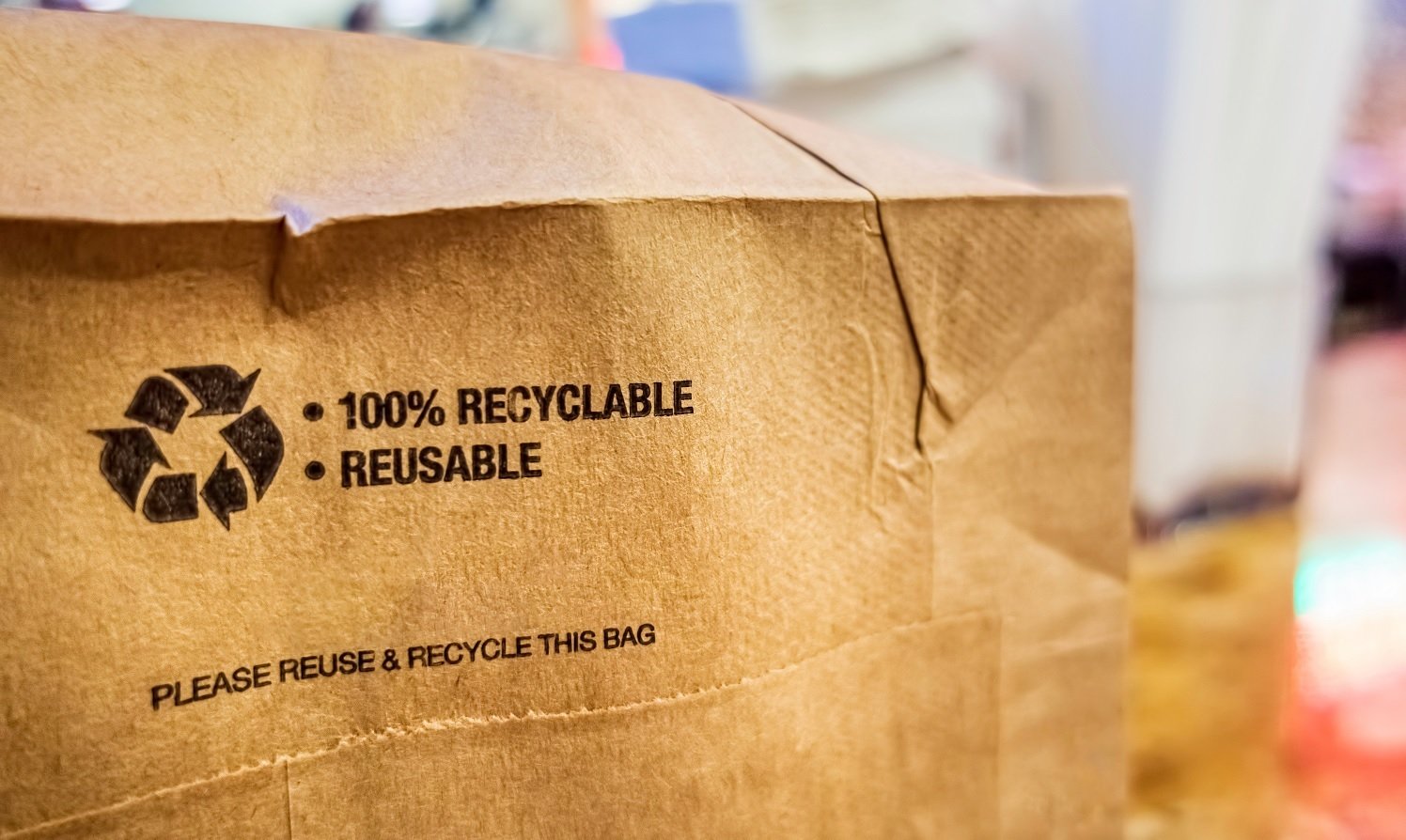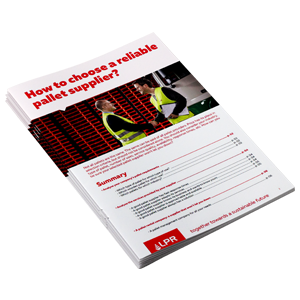Crucial for efficient distribution, packaging plays a vital role in transporting goods, ensuring their protection and safety.
Given the pressing environmental challenges of today, such as preserving natural resources and reducing waste and greenhouse gas emissions, packaging must be reimagined.
When appropriately optimised, reusable packaging holds the potential to address these environmental concerns across various sectors.
In this article, we present four expert tips to enhance the management of reusable packaging and provide valuable insights into its optimisation.
Menu:
1 | The different packaging solutions for your supply chain
2 | 4 expert tips to optimise the management of reusable packaging
1. The different packaging solutions for your supply chain
Within the logistics industry, various types of packaging are utilised, tailored to the specific requirements and stages of the supply chain:
-
Plastic pallet boxes: These sturdy containers are designed for logistics operations, enabling the transportation of solid and liquid goods within warehouses.
-
Plastic bins: There are two main variants, namely shuttle bins, which are ideal for inter-factory transport and storage of goods, and stackable bins, utilised for bulkier items.
-
Round trip crates: Renowned for their durability and functionality, these crates provide excellent protection for fragile and oversized products during transportation.
-
Shipping boxes and return pouches: These packaging options ensure the security of goods during delivery, with pouches typically employed for less bulky items.
-
Pallets: Available in plastic or wood, pallets come in standardised formats to accommodate various types of loads.
These packaging solutions effectively facilitate the handling, storage, and transportation of goods throughout the supply chain.
2. Our 4 expert tips to optimise the management of your reusable packaging
2.1. Collaborate with other companies
Reusable packaging refers to packaging that can be utilised by multiple companies, fostering collaboration, and enabling resource pooling for enhanced management of returnable packaging.
Through collective efforts, logistics players can effectively share and reduce costs in the following ways:
-
Handling and maintenance operations are distributed among different users, optimising efficiency, and reducing individual burdens.
-
Storage requirements are minimised since packaging is received only when needed, eliminating the need for extensive storage space..
-
Transportation is optimised as empty trips to transport packaging are eliminated, leading to more efficient logistics operations.
Furthermore, with the adoption of reusable packaging, there is no longer a need to purchase transport packaging separately. The rotation of packaging among various players ensures a consistent supply, eliminating the need for one-time purchases and mitigating the impact of market price fluctuations.
Practical case: pallet pooling
Pallet pooling offers a solution for businesses to rent and manage pallets through a third-party company, such as LPR, instead of purchasing them outright.
When opting for pallet pooling, the pooler takes on the responsibility for ensuring the quality, manufacturing, delivery, and maintenance of the pallets.
By renting your pallets, you reduce your transport and storage costs, and you only pay for the pallets you need.
Therefore, by embracing pallet pooling, you can effectively enhance the management of packaging within your production chain, benefiting from numerous advantages:
-
Reduced environmental impact: This logistics management solution emphasises resource reuse and conservation. With the utilisation of PEFC certified wood, repaired pallets, and recycling of damaged ones, your supply chain can actively participate in a circular economy, reducing its environmental footprint.
-
High quality and durable packaging: The provided pallets are designed to be robust, standardised, and capable of transporting various types of goods. You can rely on their strength and reliability throughout your supply chain operations.
-
No maintenance costs: The responsibility for pallet maintenance lies with the pooler. You are relieved of the burden of maintenance-related expenses, allowing you to allocate resources more efficiently.
-
No inventory required: Your packaging is delivered to you only when needed, eliminating the need for storage space and associated costs.
-
Swift supply: With 135 service centres and 32,000 collection points across Europe, LPR offers extensive coverage. This enables prompt response and delivery to meet your packaging requirements, as well as efficient retrieval of used packaging at the end of the chain.
Finally, with LPR - La Palette Rouge, our pooling services provide you with a comprehensive outsourced solution.
We offer a dedicated interface where you can conveniently place your orders, specifying the desired quantity, format, delivery date, location, and truck size.
This grants you complete control over your pallet movements and financial transactions, allowing you to further optimise your supply chain operations.
We handle all aspects of pallet management, relieving you of the responsibility of maintaining your pallet inventory.
We ensure the delivery of the required number of pallets to your production sites and efficiently collect them from your distribution points.
2.2. Use a traceability and tracking system
To optimise the management of your reusable packaging, you can use tracking tools to control their movements.
These indicators will enable you to ensure that your packages follow the correct route and avoid loss or damage.
To identify your packaging during its transfer, you can utilise:
-
Tracking indicators (barcodes, serial numbers, etc.): These indicators, coupled with computer systems and the involvement of your employees (sending emails, faxes, etc.), can help you locate your packaging.
-
Blockchain technology: This technology enables automated tracking of your goods from their origin to their final destination. It provides real-time access to information for all stakeholders, enhances data security, and offers a high-performance solution.
2.3. Establish a maintenance process for your packaging
To optimise the management of your reusable packaging, it is essential to implement an efficient maintenance process.
The primary goal is to ensure the longevity of your packaging, allowing for maximum reuse before recycling or disposal. Keeping it in good condition is crucial to prevent degradation and contamination.
In effect:
-
Damaged packaging is unable to guarantee the safety of products and goods, rendering it unfit for further use. Consequently, such packaging needs to be discarded, resulting in economic losses for the company.
-
Contaminated packaging, whether affected by mould or infested with harmful insects, poses significant risks to the safety of goods, and can also lead to severe health hazards for the company. These situations can result in substantial economic consequences.
To ensure the longevity of your packaging and facilitate its reuse within your supply chain, implementing an efficient maintenance system is crucial. Here are several possible solutions:
-
In-house washing and maintenance facility: Establishing an in-house facility allows you to have full control over the cleaning and repair process. You can develop standardised procedures to clean and maintain the packaging before each reuse, ensuring its quality and safety.
-
Rental of packaging from a specialised supplier: Opting for a rental service from a dedicated supplier relieves you of the responsibility for maintenance. The supplier will handle the cleaning and maintenance of the packaging, ensuring it meets the required standards for reuse.
- Exchange on delivery: Implementing an exchange system upon delivery can facilitate the maintenance process. Upon receiving goods, you can arrange for the exchange of used packaging with clean ones. This allows for a seamless transition and ensures that only well-maintained packaging is used in your supply chain.
2.4. Educate your stakeholders
The management of returnable packaging is a shared responsibility between the various players in the supply chain, who work together to deliver a quality product or service to their customers:
-
Suppliers: They provide raw materials, components, or finished products to production sites. They play a crucial role in ensuring a smooth supply for manufacturing processes.
-
The company: The company itself takes charge of overseeing and managing various aspects of the production chain, including production operations, inventory management, and the distribution of finished products.
- Manufacturers: These are the individuals involved in the production process, responsible for making and packaging the goods. Their expertise and diligence are vital in ensuring the quality and efficiency of production.
-
Distributors: Distributors are responsible for managing the distribution of finished products, ensuring their availability at points of sale or for end customers. They play a crucial role in reaching the target market effectively.
-
Carriers: Carriers are responsible for transporting and delivering the products from the production sites to their intended destinations. They ensure timely and secure transportation throughout the supply chain.
- Logistics service providers: Companies often collaborate with external service providers specialised in logistics to outsource specific tasks within the supply chain. This may include activities like maintenance and cleaning of reusable packaging, ensuring efficient operations.
-
Regulatory authorities: Regulatory authorities are responsible for enforcing quality, health, safety, and environmental regulations and standards within the supply chain. They ensure compliance and promote ethical practices across the industry.
- Consumers: Consumers are the end-users of products or services, and their satisfaction plays a significant role in the success of a supply chain. Increasingly, consumers prioritise environmental concerns and show more confidence in companies that adopt sustainable practices, such as the use of reusable packaging with reduced environmental impact.
That’s why it is crucial to raise awareness among each stakeholder about the significance of maintaining reusable packaging and their role in this process.
The implementation of reusable packaging necessitates a re-evaluation of certain supply chain procedures. To ensure successful adoption and implementation, it is imperative that all stakeholders within the supply chain understand and embrace these changes.
Conclusion
Packaging, a crucial component of the supply chain, has become a shared concern among all logistics players who recognise the need to adapt their practices and prioritise responsible and sustainable packaging solutions.
The adoption of reusable and returnable packaging, including wooden pallets, washable plastic bins, and return boxes, enables retailers to align their ecological responsibility with the efficiency of their supply chain operations.
Provided that they are managed and maintained, by:
-
all links in the supply chain
-
all players in the FMCG industry and distributors.
Are you interested in joining a pallet pool?
Our teams are available to assist you and ensure a smooth transition towards making the change. Contact us today!



